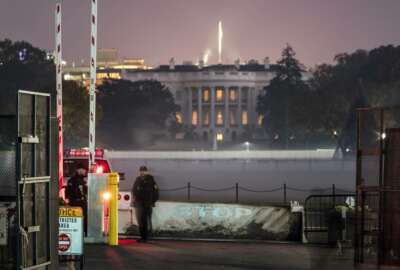
Fire pokes through the veneer of technology
An old, old danger still rears up, especially at this time of year
In mythology, giving mankind fire really cost old Prometheus.
Seeing the fate of the U.S.S. Bonhomme Richard, it struck me how much fire can cost the United States. I mean the government itself. Like runaway viruses, fire still has amazing power to alter the course of things despite how far advanced we may be technologically.
Monday the Navy said it had no choice but to scrap the light carrier, which burned for days back in July. The fire, of still-mysterious origin, didn’t sink or destroy the ship totally. It rendered it uneconomic to repair, the Navy said, citing an estimate of $3 billion and up to seven years. What stung worse is that the Wasp-class Bonhomme Richard had just completed a maintenance and upgrade period, meaning that before the fire it was in tip-top condition.
Such a ship up close looks invincible, a floating mountain of gray-painted steel. The Navy, in reality, knows better. Shipboard firefighting is one of the basic skills it drills into sailors. The Bonhomme Richard was in dock and largely unmanned at the time of the July fire.
Unlike you or me, the Navy can’t call up Allstate and see about a new ship. That’s it. Unless there’s an appropriation or reprogramming, the Navy must simply make do with one less amphibious assault ship. Reporting by the U.S. Naval Institute said there’s the possibility of slipping a new LHD into the pipeline at around $4 billion, but that might have to take place instead of some other, planned construction. In the meantime, extra duty for the Bonhomme Richard’s sister ships, straining crews, equipment and readiness.
Fire has struck the government regularly. Just a year ago a relatively minor fire in a General Services Administration building in Southwest Washington, D.C. sent people scurrying. Many years ago, the night before the GSA administrator’s historic office was set to reopen after a major renovation, a fire broke out and ruined all the work. If I recall, it was deemed a contractor error from a bucket of oily rags that burst into flame.
In 1996 a fire in the roof of the Treasury Department’s historic building caused the evacuation of more than 1,000, and took hours to extinguish.
To this day the Army, Air Force and Department of Veterans Affairs are dealing with a devastating 1973 fire at the National Personnel Records Center in St. Louis, Missouri. Decades of individual service members’ records were lost, and there were no duplicates. The National Archives and Records Administration calls that one an unparalleled disaster.
Sometimes people who don’t like the government try to set federal facilities ablaze. Last July arsonists tried to burn the federal courthouse in Portland, Oregon. They threw burning materials over a fence they worked to cut down, then tossed fireworks inside.
The White House has experienced a couple of fires. The famous 1814 fire, during the war with the British, pretty much gutted it. It’s said that charred timbers, reused in that rebuild, were still visible in the 1949-1952 reconstruction. But the West Wing had its own severe, 4-alarm fire on Christmas Eve of 1929, ruining the Oval office. The whole wing had to be rebuilt.
The infamous wildfires that have plagued the West for several years have proven expensive in terms of the resources — federal, state and local — required to check them. New fires broke out in Nevada and California just in the last couple of weeks. The smoke remains long after and produces all sorts of ungood atmospheric and health effects.
Now many people will have trees, electric lights and candles in their homes for the holidays. The National Fire Protection Association says Christmas trees cause something like 160 house fires a year. What good is that game box you stood in line for all night if it melts in a living room conflagration? FEMA’s U.S. Fire Administration has a web site devoted to Christmas-time fire prevention.
One summer evening more than a decade ago, my wife and I were startled by a commotion just around the corner from our house. A neighbor’s house was burning. Luckily no one was hurt. I remember the paint and solvent cans in the garage exploding. More than a year later, when the house was finally rebuilt, the owner became the third person I’ve known personally to tell me how much fire changed their life.
Amazing how much fire can do to governments, communities and individuals, despite the technology and built-environment that seemingly insulates us from such dangers. Be careful this season, will you?
Copyright © 2024 Federal News Network. All rights reserved. This website is not intended for users located within the European Economic Area.
Tom Temin is host of the Federal Drive and has been providing insight on federal technology and management issues for more than 30 years.
Follow @tteminWFED
Related Stories






